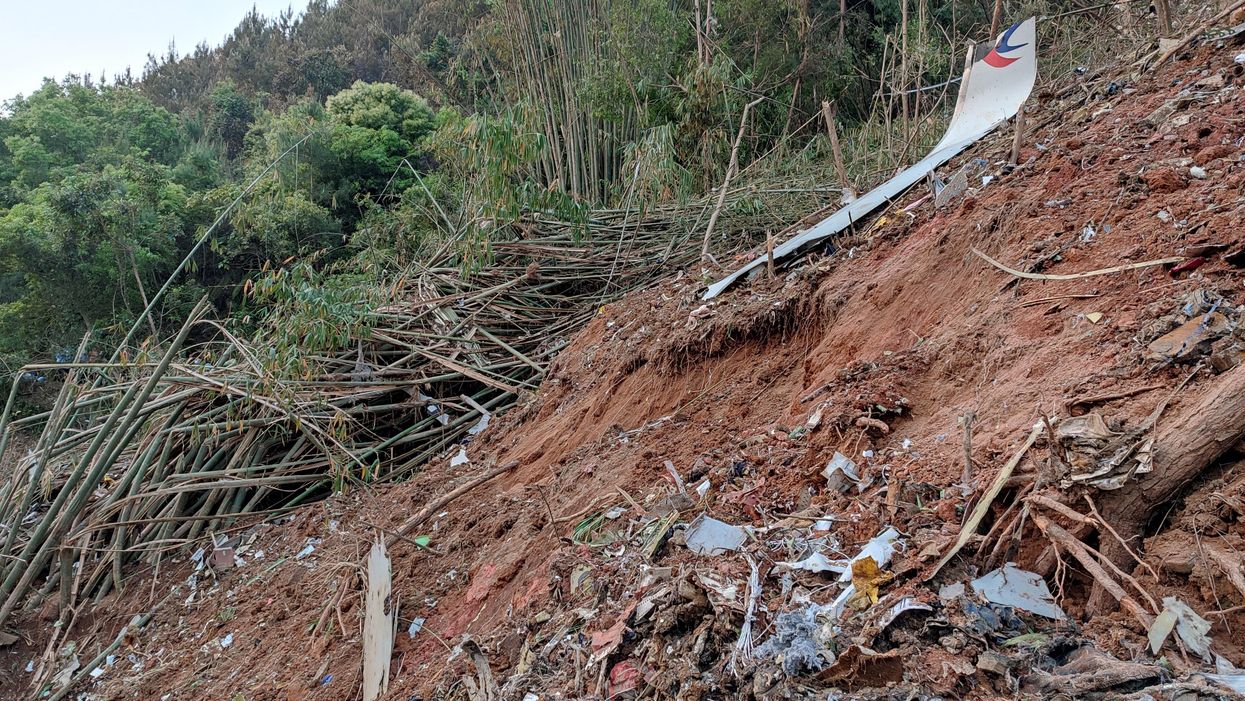
Photo by Xinhua via Getty Images

Some experts believe that this week's Chinese plane crash may have taken place as a result of a "human-induced event."
China Eastern Airlines flight 5735 crashed Monday with more than 130 people on board after it plummeted to the ground in just minutes from an altitude of nearly 30,000 feet.
Rescue crews have yet to locate any survivors at the time of this reporting.
Australian aviation expert Neil Hansford told news.com.au that he cannot fathom how the plane would have vertically crashed into the ground without some sort of human interference.
“Even with total loss of power, no aircraft plummets to the ground from 20,000 feet in two minutes with an event at 8,000 feet,” Hansford reasoned. “I think aircraft technical failure can be ruled out and it will be an external event ... I would get on a Boeing 737-800 in an instant with an Australian carrier, so my suggestion would be it won’t be Boeing or aircraft technical related.”
He added that he believes it is "very unlikely" that a pilot would have passed out during the trip, "as the non-flying pilot would have been able to very safely take over the flying" and safely land the aircraft in some kind of emergency.
“Likely scenarios include pilot suicide, aircraft mid-air collision with military aircraft (they don’t have transponders like civil aircraft), [the flight] was struck by a missile or an on-board explosion," Hansford continued. "My tipping is a human-induced event or bought down by rogue missile. Debris looks like MH117 over Ukraine, and the Chinese are providing too much information this time which is uncharacteristic.”
Sally Gethin, a United Kingdom-based expert, added that she believed it was “really hard to ascertain at this point in time whether the aircraft was entirely intact" when it "dropped so suddenly.”
“I would tend to think that there had already been a catastrophic incident on board for it to be able to drop so dramatically in that way,” she explained. “But at the same time, it could also be a problem that the pilot was struggling with and finally lost control.”
She added, “[It] will be revealed in their communications with the radar control, with their traffic management side, and that will be revealed in the voice recorder. [The plane] was at nearly 30,000 feet – which is cruising altitude – and from the ground that would look like a dot up in the sky,” she said when asked about footage showing the crash. “It fell from that height – nearly 30,000 feet – suddenly perpendicular. It maintained some stability, it paused and then several seconds later it then dropped again suddenly. That footage captures it in that second phase, where it drops completely vertically to the ground.”
The International Business Times reported that ahead of its steep descent, FlightRadar24 showed the aircraft plummeting from 29,100 feet to just 9,075 feet in approximately two minutes. Just 20 seconds later, the aircraft's altitude was 3,225 feet and contact was lost.
The report noted that such a landing would typically take approximately 30 minutes.
A Tuesday Reuters report stated that extensive damage to the aircraft would ultimately make it quite difficult to pinpoint the precise cause of the crash.
Zhu Tao, director of aviation safety at the Civil Aviation Administration of China, told reporters that "investigations will face a very high level of difficulty" due to the condition of the airliner.
"Given the information currently available, we still do not have a clear assessment of the cause for the crash," Tao added.